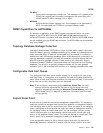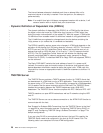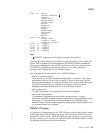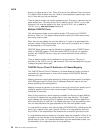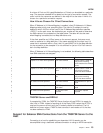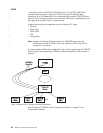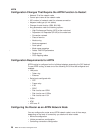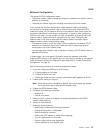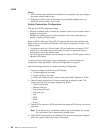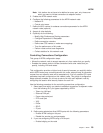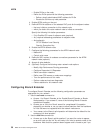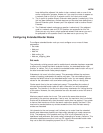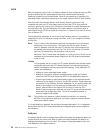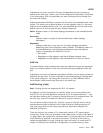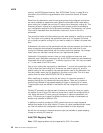Minimum Configuration
This group of APPN configuration steps:
v Allows the network node to accept any request it receives from another node to
establish a connection.
v Restricts the network node from initiating connections with other nodes.
If you choose the minimum configuration steps, adjacent nodes must define
connections to the router network node to ensure connectivity. Because APPN
nodes can initiate CP-CP sessions with the router network node, these nodes do
not need to be defined in the router’s configuration. In general, when configuring
APPN on the router, you can simplify the task considerably by allowing the router
network node to accept connection requests from any node. Configuring the
network node in this manner eliminates the need to define information about
adjacent nodes, except in the following cases:
v The adjacent node is a LEN end node. LEN end nodes do not support CP-CP
sessions, so information about such nodes and their LU resources must be
configured on the router network node.
v You want the router network node to be able to initiate a CP-CP session with an
adjacent APPN node.
In these cases, you must specify information about the adjacent node when
enabling APPN routing on the specific port you are using to connect to the adjacent
node, and should follow the configuration steps described in “Initiate Connections
Configuration” on page 28.
Use the following procedure for minimum configuration steps:
1. If you are configuring APPN using a DLSw port:
a. Enable bridging on the node
b. Enable DLSw on the node
c. Define the DLSw port with a locally administered MAC address for DLSw.
2. Enable APPN routing on the port.
Note: Since
Service Any
is enabled by default, the node accepts any request
for a connection that it receives from another node.
3. Enable the APPN Network Node.
4. Configure the following parameters:
v Network ID
v Control point name
5. Define the XID number for subarea connections parameter for the APPN
network node (optional).
6. Accept all other defaults.
7. Optionally do the following:
v Modify High-Performance Routing parameters
v Configure Dependent LU Requester
v Define connection networks
v Define new COS names or mode name mappings
v Tune the performance of this node
v Perform node service trace diagnostics
v Collect statistics for this network node
APPN
Chapter 1. APPN 27



